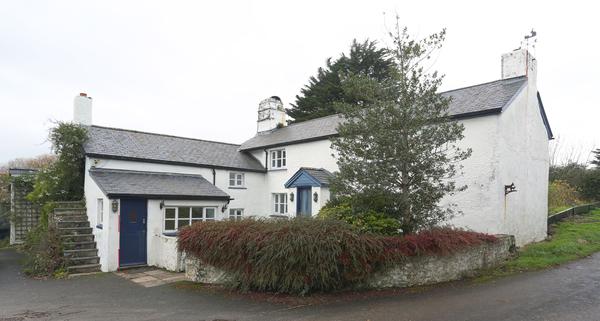Current Article Views: 253 views
The built heritage team from Wessex Archaeology has recently recorded a group of 18th–19th-century farm buildings, including a Grade II listed farmhouse, at Steart Farm, Buck’s Cross, near Bideford on the north Devon coast. The Level 4 record was carried out for RPS Planning and Development in advance of construction of the new Route 39 academy on the site.
The work included detailed digital 3D measured survey, photography, fabric analysis and documentary research. Analysis of the plan form and fabric of the farmhouse suggests the earliest part may date from the 17th–early 18th century, which is older than that suggested in the listing description. This early house had a simple rectangular plan, with walls constructed of cob and timber ‘A’ framed roof trusses. At one end was a large inglenook fireplace, the focal point of the house, providing heat and where all the cooking was done. The farmhouse was extended to the south-west with a service range added during the mid-18th century.
On one side of the inglenook fireplace was a ‘cloam’ oven, a feature characteristic of traditional north Devon houses. Cloam ovens were built of clay and made locally in the Bideford and Barnstaple area, a centre of clay oven construction and distribution from the 17th–19th centuries. The surveyors were surprised to discover a re-used cast iron ingot with visible maker’s stamp that had been used as a lintel over the oven opening, albeit inserted upside down. On close inspection, the stamp reads ‘PRINCIPO * 1727’.
The significance of this feature was not at first apparent, however research has indicated that the iron ingot or ‘pig’ is a rare survivor of the Principio Iron Works in Perryville, Maryland, USA. The works was established in 1719 and operated from 1723 being the earliest in the county and one of the first in the American colonies. It has been estimated that approximately 50,000 tons of pig and bar iron were exported from Maryland to Britain between 1718 and 1755, perhaps half from the furnaces of the Principio Company. Most of this went to London, but some consignments were sent to other ports, amongst which may have been nearby Bideford.
Steart Farm was part of the large Rolle Devon estate during the 18th–19th centuries. During the late 19th century the estate was run by the prolific philanthropist and builder Mark Rolle (1865–1907) who was responsible for many improvements to farm buildings across his estates in south and north Devon. Rolle’s work can be seen at Steart Farm in the characteristic red brick dressings and features on some of the buildings (see below). Rolle constructed a new cow shed or shippon (later converted into a bungalow) attached to the existing barn and, as part of this general improvement, a horse engine house was built so that fodder could be processed for the cows kept nearby.
Following the death of Mark Rolle in 1907, Steart Farm was sold to meet inheritance taxes. It continued for some time as a small independent farm for most of the remaining years of the 20th century, but was eventually sold and ended up as a camping and caravanning park until this closed in 2014. Despite the new development, this is not the end of the farm, as the farmhouse, and some of the historic outbuildings are will be incorporated into the academy complex.
Source: Wessex Archaeology
RELATED ARTICLES


